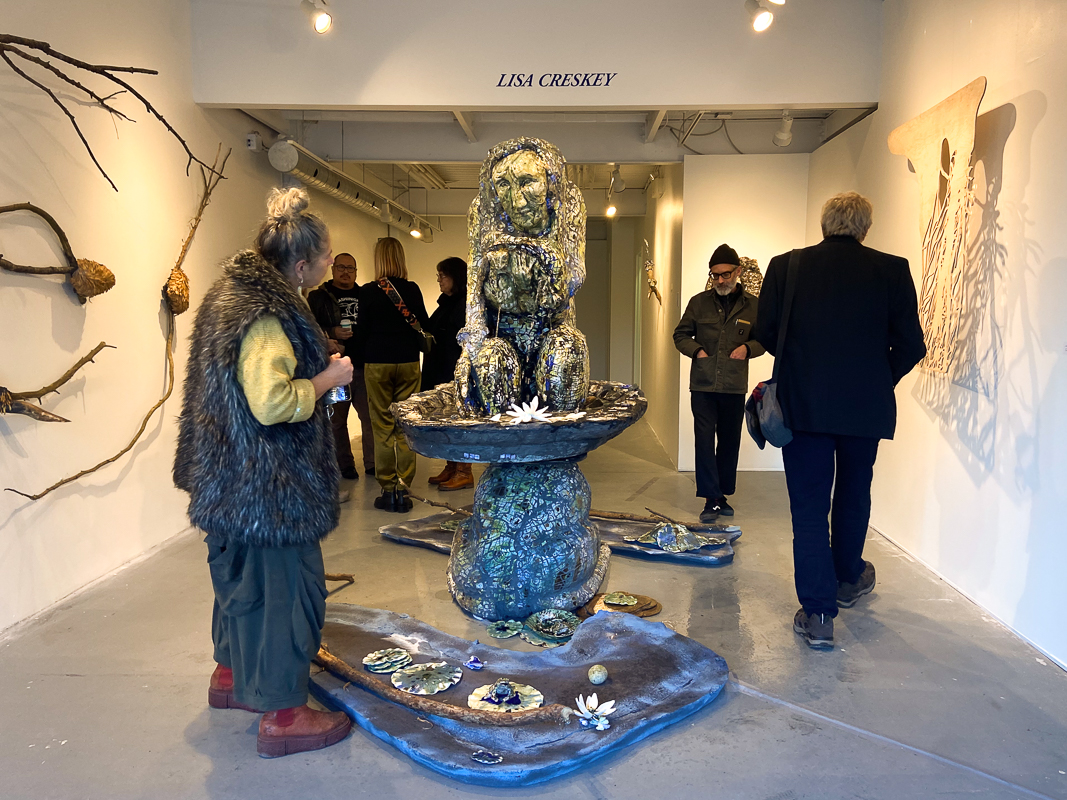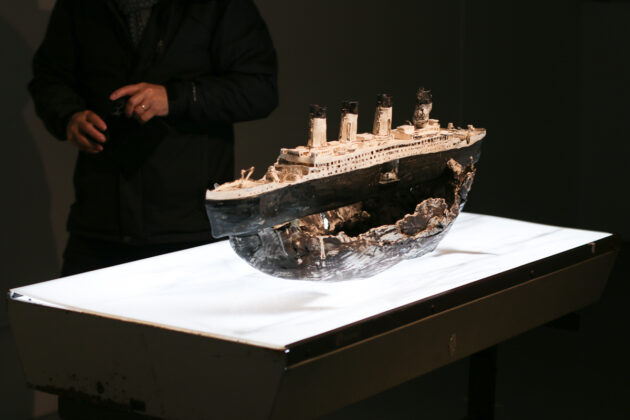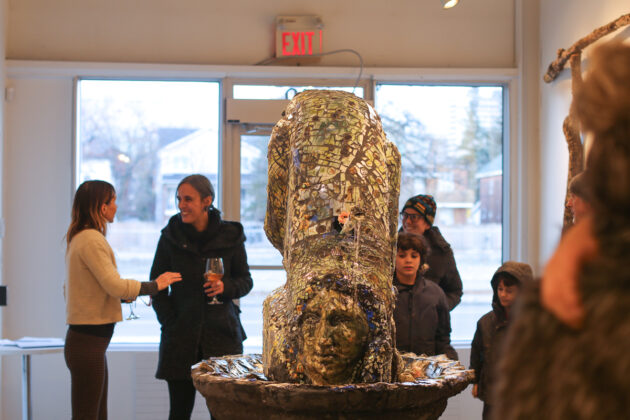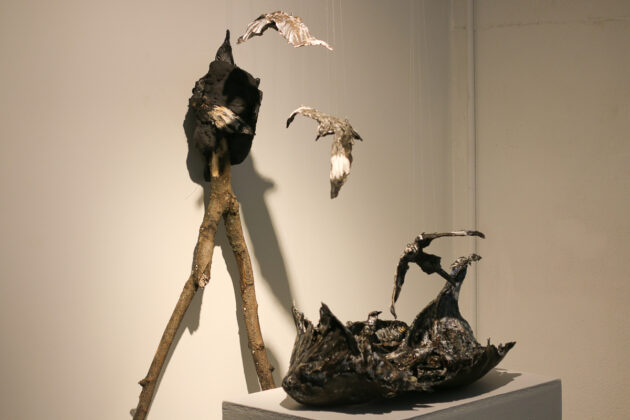Lisa Creskey’s Tides exhibit premiered at Gallery 101 on Nov. 18, featuring powerful messages about climate change and ensuing humanitarian crises.
Tides focuses on the unprecedented impacts and human contributions to climate change, including forced migration, displacement, fluidity and compassionate ecology.
Ceramic artist Creskey said she first imagined the concept for Tides when a hemlock tree fell behind her during a snowstorm in May 2022. Although she said she was traumatized by the incident, the tree became a recurring model for her work.
She used branches from the fallen hemlock to create a title sign for the show, connecting the life cycle of the tree to the idea of following a stream.
“It made me think of how the branches moved in the wind. It made me think of the ocean and the wind [itself] and [how] nature is all connected,” Creskey said.
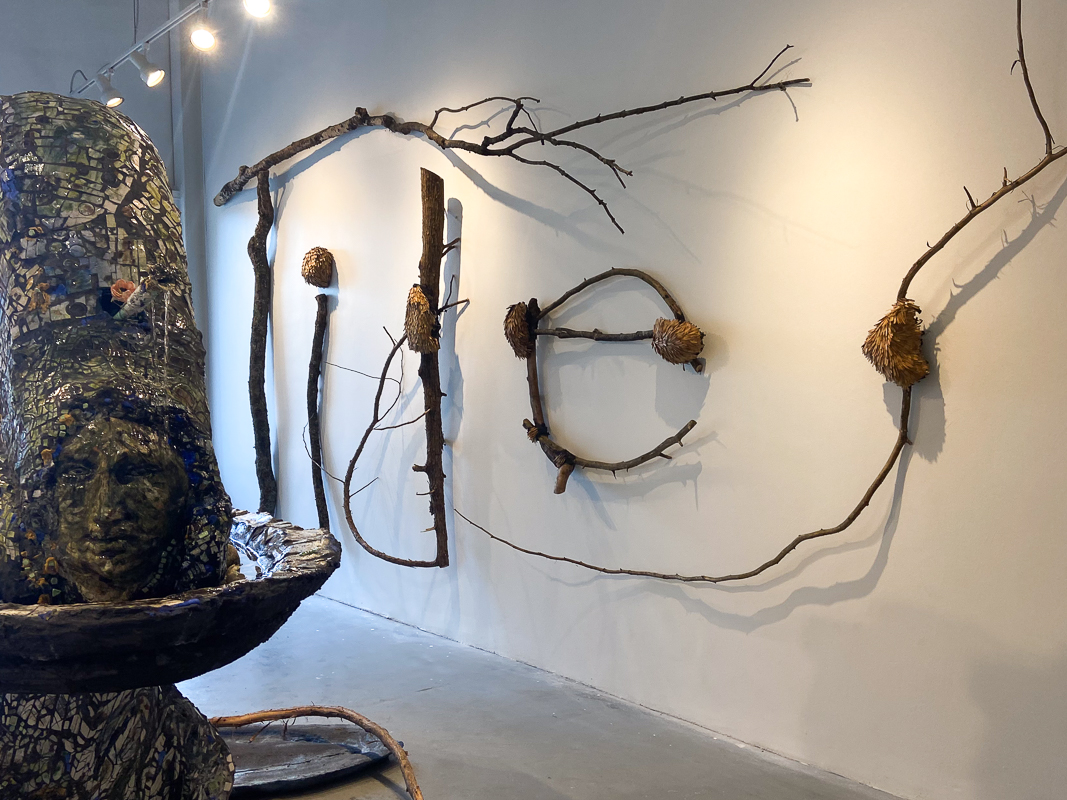
Creskey said she wished to reclaim the word “tides” after speaking to Daiva Stasiulis, chancellor’s professor emerita of sociology at Carleton University, about the phrase “tides of people.” The two said they believe misuse and dehumanization is evoked when the word describes refugees or migrations.
Creskey added she wanted to move away from language, instead focusing on visually representing the climate crisis by crafting large installations. Distinctive usage of parasitic jaegers, frogs and miniature refugee ships connects Tides’ themes of migration, interconnection and water.
“Working with clay — it’s [an] inanimate material until you add water. It also gives life to my material and to my work,” she said. “It addresses [water] on the level of using the materials and imagery to create empathy and resonance.”
Entering the Gallery 101 exhibit, a large fountain piece sits in the middle of the room spouting water in different directions. In the fountain, a sculpture of a woman lactating water looms over a small migrant ship, which Creskey said illustrates how water is an essential agreement between humans and their young.
The water used in the fountain piece originates from a water source pump near Wakefield, Que. that has been under an on-and-off boil advisory for the past two years.
“The idea of water, it’s the basis of human life. We’re all life on Earth. The idea was to get this sense of connectivity, the essential quality that connects all life on Earth,” Creskey said. “There are so many levels of division between people and environment.”
Creskey said she hopes her audience understands the need for empathy between humans and the environment to combat climate issues.
“Empathy is an innate human quality, it’s an essential human quality. We tend to forget that,” she said. “We compromise our own humanity when we step away from compassion. It’s our duty as a human being to recentre our compassion.”
Stasiulis said she was drawn to Creskey’s art due to her academic work on climate change and migration. While climate change can be ignored by states and corporations, she said art is a reflection of the world in which we live.
“Art is an expression of how dire things are,” Stasiulis said. “In [Creskey’s] case, she actually uses the material that has been produced through environmental deterioration: the clay and the [tree branches].”
Laura Margita, director and curator at Gallery 101, focuses on showcasing different perspectives to start conversations around difficult topics such as climate change.
She said she enjoyed the installation process for Tides, including seeing the work come together and unpacking subdued meanings. She said she believes Tides will spark conversations about the impact of climate change on the local community.
“I think what’s important is how to maintain your resilience and your ideas to fight these things,” Margita said. “I think what we’re doing is supporting each other to have the strength to have the conversations in the first place.”
Gatineau-based artist Danielle Doucet walked around the exhibition, gathering a strong sense of migration as she observed the depictions of new arrivals and people using boats to flee their home countries.
“You can see the movement of the sea … and it touched me,” Doucet said. “Coming from Canada, I’ll probably never know what it’s like but looking at [Creskey’s] art, I can feel the emotion, the danger and the turmoil.”
Tides will be on display with free admission until Dec. 16.
Featured image by Sadeen Mohsen/the Charlatan.


